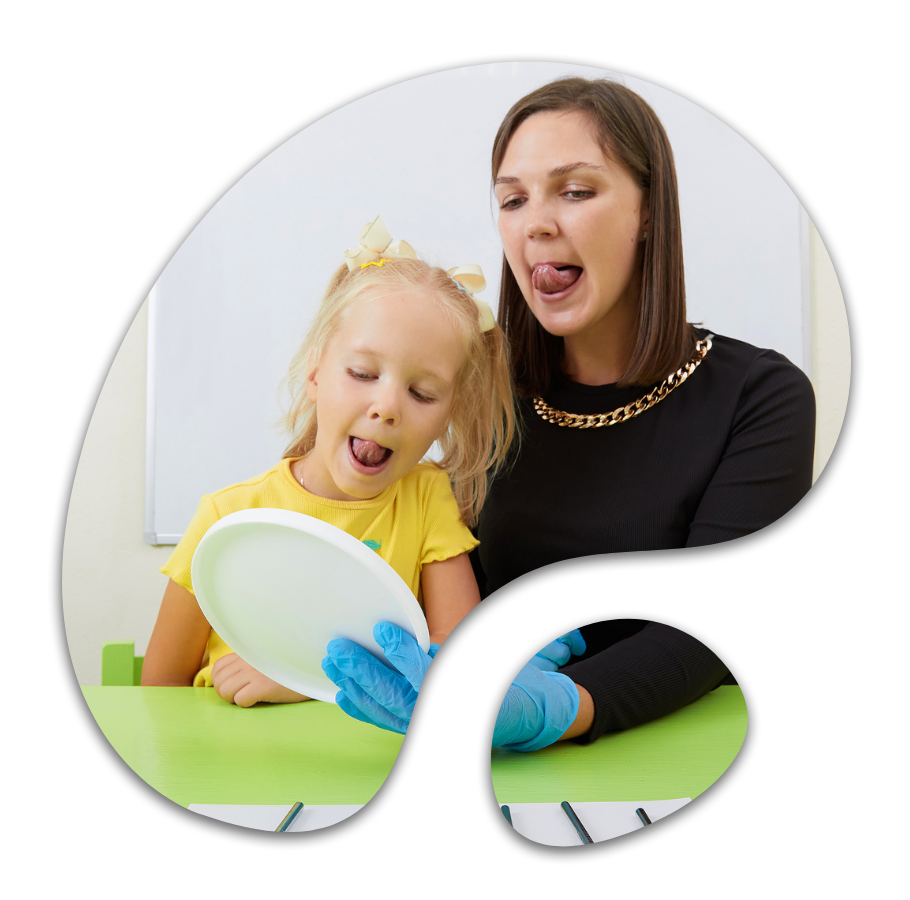

Speech Sound Disorder (SSD)
Speech Sound Disorder (SSD)
Helping Kids Speak Clearly: All About Disorders Speech Sound Disorder (SSD)
Speech Sound Disorder refers to difficulties with the physical production of speech sounds. These challenges may result from problems with:
Articulation (how sounds are made)
Phonology (patterns of sounds used in speech)


Children with SSD might:



✅ Add extra sounds (e.g., saying “buhlue” for “blue”)
Why Some Sounds Are Hard to Say: A Parent’s Guide

What Research Says
- Early intervention is crucial:
Studies show that children who begin therapy early make faster progress in speech sound development (Journal of Speech, Language, and Hearing Research, 2013). - Parent involvement accelerates progress:
Research indicates that children whose parents practice speech techniques at home see greater improvement in sound clarity (Language, Speech, and Hearing Services in Schools, 2011). - Phonological awareness improves outcomes:
Developing phonological awareness (recognizing sounds in words) is essential for improving speech clarity and overall language skills (Gillon, 2004).
Everything You’ve Been Wondering About Speech Sounds
Signs of SSD include difficulty pronouncing words clearly, such as substituting sounds (e.g., saying “wabbit” instead of “rabbit”), omitting sounds (e.g., saying “ca” for “cat”), or distorting sounds. If your child’s speech is hard to understand by others, especially after age 3 or 4, it’s a good idea to consult with a speech-language pathologist.
If your child’s speech is unclear, and it’s affecting their ability to communicate with others, therapy can help. Also, if your child struggles with sounds consistently beyond age 3, or if there’s little improvement despite your efforts at home, therapy is essential. Early intervention can help prevent future language challenges.
Speech therapy for SSD focuses on teaching children the correct way to produce speech sounds. A therapist uses activities, games, and exercises tailored to your child’s needs to practice making sounds accurately. The therapist will also work with you to practice at home, reinforcing what was learned in therapy sessions.
The timeline varies based on the severity of the SSD and how often your child attends therapy. Most children begin showing progress within a few months of consistent therapy. However, it can take longer for more complex issues. Your speech therapist will regularly assess progress and adjust therapy accordingly.
While some children may improve on their own, therapy is often the most effective way to address persistent speech sound issues. The earlier your child starts therapy, the better the chances for clearer speech, improved confidence, and better communication skills.
Even if your child is speaking more as they grow, if their speech is still unclear or they consistently make the same errors, therapy is important. Untreated SSD can impact their ability to learn new words, read, and engage in social interactions with peers.
Yes! In fact, home practice is key to success. Your therapist will give you specific exercises and strategies to practice with your child at home. Consistent, daily practice helps reinforce what’s learned in therapy, improving speech clarity faster.
